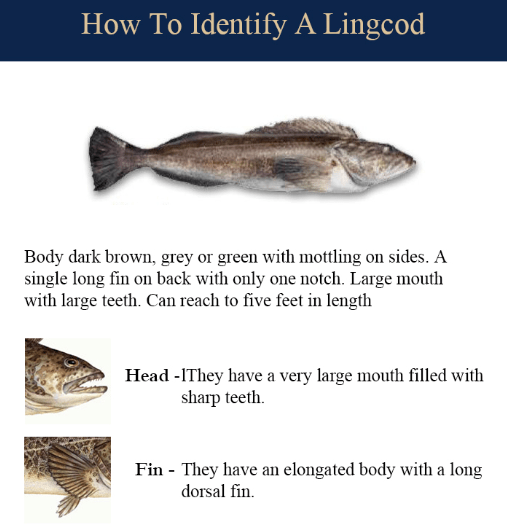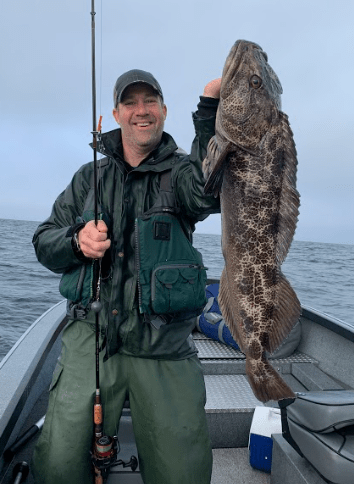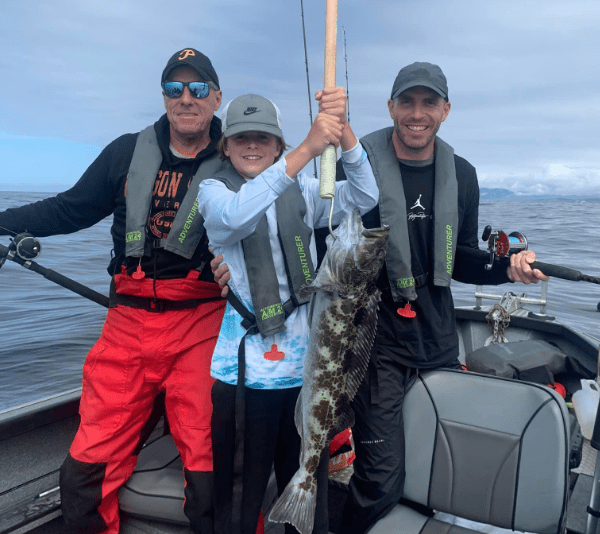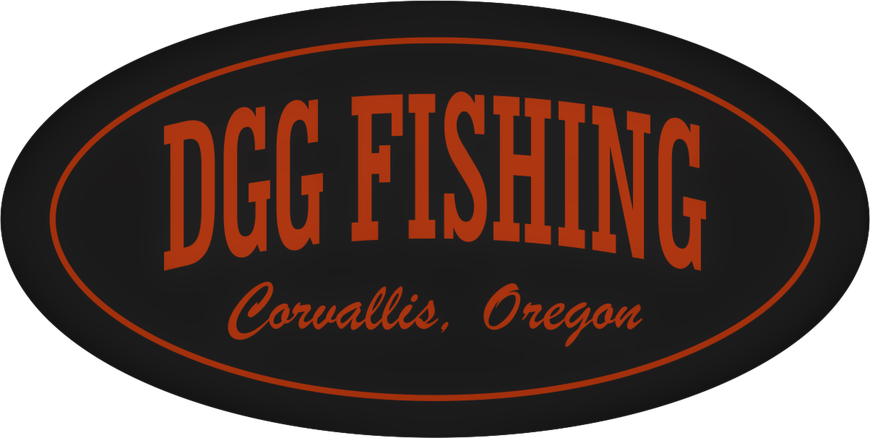Ling Cod
Rockfish





Oregon Lingcod Fishing
Oregon is a prime destination for lingcod fishing, with a long coastline and abundant populations of these prized fish. Lingcod are known for their delicious white meat, aggressive fighting ability, and unique appearance.
What is lingcod?
Lingcod are a member of the greenling family and are native to the North Pacific Ocean. They are characterized by their elongated bodies, large mouths, and sharp teeth. Lingcod can grow to be over 5 feet long and weigh over 100 pounds, but the average lingcod caught in Oregon is around 2-3 feet long and weighs 10-20 pounds.
Where to find lingcod in Oregon
Lingcod are found in a variety of habitats along the Oregon coast, from rocky reefs to sandy bottoms. They are most commonly found in depths of 50 to 200 feet, but can be found as deep as 1,000 feet.
Some popular lingcod fishing spots in Oregon include:
- Astoria: Buoy 10, Tongue Point, Yaquina Head
- Newport: Yaquina Bay, Devil’s Churn, Rogue River
- Coos Bay: Cape Arago, Charleston Jetties, Bastendorff Beach
- Brookings: Hunter Creek, Harris Beach, Chetco River
When to fish for lingcod in Oregon
Lingcod can be fished year-round in Oregon, but the best time to fish for them is during the spring and summer months, when they are more active and closer to shore.
What gear do you need for lingcod fishing?
To fish for lingcod, you will need the following gear:
- A medium-heavy to heavy-duty fishing rod and reel
- 20- to 30-pound test line
- A variety of hooks, sizes 5/0 to 6/0
- A variety of weights, 4 to 8 ounces
- A leader, at least 30 inches long
- A variety of bait, such as live herring, mackerel, or anchovies
How to catch lingcod in Oregon
There are two main ways to catch lingcod: bottom fishing and jigging.
Bottom fishing:
To bottom fish for lingcod, tie a weight to the end of your leader and attach your hook and bait above the weight. Cast your line out and let it sink to the bottom. Then, reel in slowly, dragging the weight along the bottom.
Jigging:
To jig for lingcod, use a jig head with a soft plastic trailer. Cast your line out and let it sink to the bottom. Then, reel in slowly, jigging the rod up and down.
Tips for filleting and cooking lingcod
Lingcod have a thick skin and sturdy bones, so it is important to fillet them properly. To fillet a lingcod, follow these steps:
- Remove the head and tail.
- Make a cut along the dorsal fin, from the head to the tail.
- Peel back the skin on each side of the fish.
- Remove the backbone and ribs.
- Cut the fillets into serving-sized pieces.
Lingcod can be cooked in a variety of ways, including grilling, baking, and frying. It is important to cook lingcod thoroughly, as it can carry parasites.
Here are some recipes for cooking lingcod:
- Grilled lingcod: Brush lingcod fillets with olive oil and season with salt, pepper, and your favorite herbs. Grill over medium heat for 3-4 minutes per side, or until cooked through.
- Baked lingcod: Preheat oven to 350 degrees Fahrenheit. Place lingcod fillets in a baking dish and drizzle with olive oil. Season with salt, pepper, and your favorite herbs. Bake for 20-25 minutes, or until cooked through.
- Fried lingcod: Dredge lingcod fillets in flour and then beaten egg. Fry in hot oil for 2-3 minutes per side, or until golden brown and cooked through.
Conservation
Lingcod are a managed species in Oregon, and there are a number of regulations in place to ensure their long-term sustainability. Be sure to check the Oregon Department of Fish and Wildlife website for the latest regulations before you go fishing.
Conclusion
Lingcod fishing is a popular and rewarding sport in Oregon. With a little planning and preparation, you can have a successful lingcod fishing trip. Be sure to follow the regulations and practice good fishing etiquette.
Rock Fish
Oregon is home to over 30 species of rockfish, making it one of the best places in the world to fish for this popular saltwater fish. Rockfish are known for their delicious white meat, diverse habitats, and vibrant colors.
What is rockfish?
Rockfish are members of the Scorpaenidae family, which also includes scorpionfish and lionfish. They are characterized by their rocky habitats, spiny fins, and venomous spines. Rockfish can range in size from a few inches long to over 3 feet long, and they can live for over 100 years.
Where to find rockfish in Oregon
Rockfish are found in a variety of habitats along the Oregon coast, from rocky reefs to sandy bottoms. They are most commonly found in depths of 50 to 200 feet, but can be found as deep as 1,000 feet.
Some popular rockfish fishing spots in Oregon include:
- Astoria: Buoy 10, Tongue Point, Yaquina Head
- Newport: Yaquina Bay, Devil’s Churn, Rogue River
- Coos Bay: Cape Arago, Charleston Jetties, Bastendorff Beach
- Brookings: Hunter Creek, Harris Beach, Chetco River
When to fish for rockfish in Oregon
Rockfish can be fished year-round in Oregon, but the best time to fish for them is during the spring and summer months, when they are more active and closer to shore.
What gear do you need for rockfish fishing?
To fish for rockfish, you will need the following gear:
- A medium-heavy to heavy-duty fishing rod and reel
- 15- to 20-pound test line
- A variety of hooks, sizes 2/0 to 4/0
- A variety of weights, 2 to 6 ounces
- A leader, at least 20 inches long
- A variety of bait, such as live herring, mackerel, or anchovies
How to catch rockfish in Oregon
There are two main ways to catch rockfish: bottom fishing and jigging.
Bottom fishing:
To bottom fish for rockfish, tie a weight to the end of your leader and attach your hook and bait above the weight. Cast your line out and let it sink to the bottom. Then, reel in slowly, dragging the weight along the bottom.
Jigging:
To jig for rockfish, use a jig head with a soft plastic trailer. Cast your line out and let it sink to the bottom. Then, reel in slowly, jigging the rod up and down.
Tips for filleting and cooking rockfish
Rockfish have a thick skin and sturdy bones, so it is important to fillet them properly. To fillet a rockfish, follow these steps:
- Remove the head and tail.
- Make a cut along the dorsal fin, from the head to the tail.
- Peel back the skin on each side of the fish.
- Remove the backbone and ribs.
- Cut the fillets into serving-sized pieces.
Rockfish can be cooked in a variety of ways, including grilling, baking, and frying. It is important to cook rockfish thoroughly, as it can carry parasites.
Here are some recipes for cooking rockfish:
- Grilled rockfish: Brush rockfish fillets with olive oil and season with salt, pepper, and your favorite herbs. Grill over medium heat for 3-4 minutes per side, or until cooked through.
- Baked rockfish: Preheat oven to 350 degrees Fahrenheit. Place rockfish fillets in a baking dish and drizzle with olive oil. Season with salt, pepper, and your favorite herbs. Bake for 20-25 minutes, or until cooked through.
- Fried rockfish: Dredge rockfish fillets in flour and then beaten egg. Fry in hot oil for 2-3 minutes per side, or until golden brown and cooked through.
Conservation
Rockfish are a managed species in Oregon, and there are a number of regulations in place to ensure their long-term sustainability. Be sure to check the Oregon Department of Fish and Wildlife website for the latest regulations before you go fishing.
Conclusion
Rockfish fishing is a popular and rewarding sport in Oregon. With a little planning and preparation, you can have a successful rockfish fishing trip. Be sure to follow the regulations and practice good fishing etiquette.
